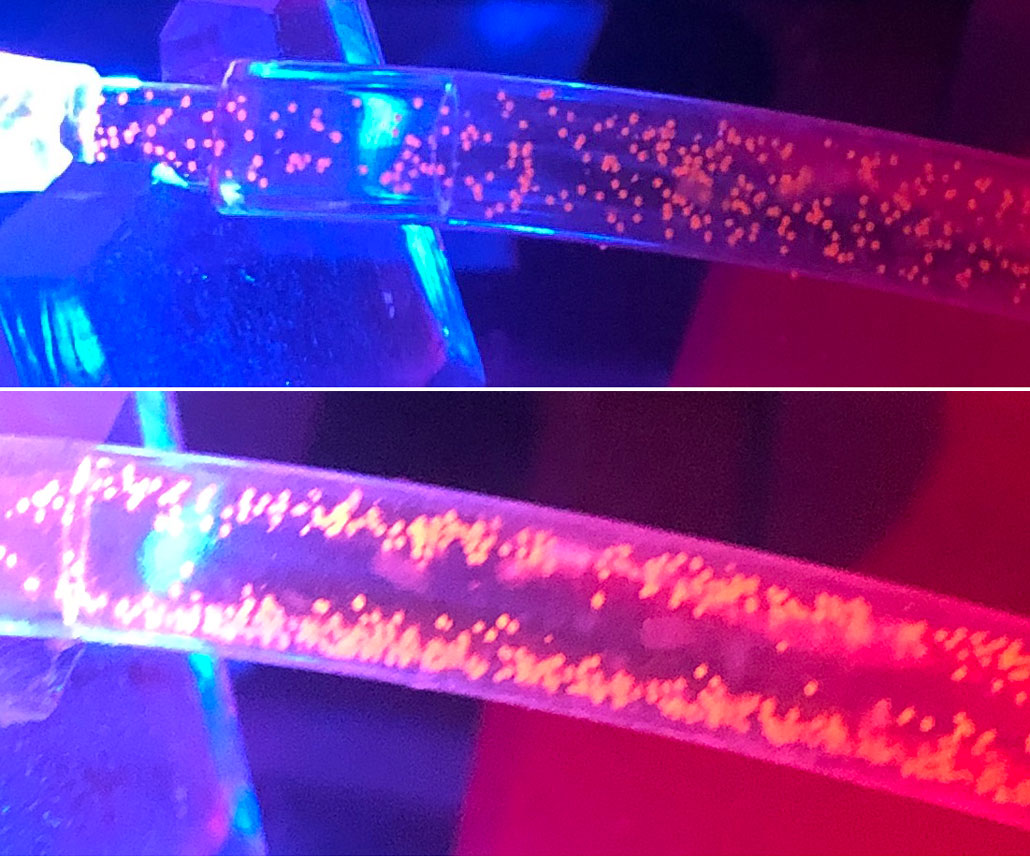Ultrasound waves can help remove polluting microplastics in water
Published on by Water Network Research, Official research team of The Water Network in Academic
His team’s new system turned to ultrasound — frequencies beyond what people can hear.
The researchers send contaminated water down a tube. Bits of plastic can be found throughout the liquid. The tube’s water flows past a transducer, a device that converts electrical energy into sound energy. It makes ultrasound waves that travel from one side of the tube to the other, bouncing like an echo through the liquid. When they hit microplastics, these waves exert a force on the particles.
What happens next depends on the size of those plastic bits.
Ones less than about 180 micrometers (less than 7 thousandths of an inch) across will move to the center of the flow. Larger particles — ones close to the ultrasound’s wavelength — will “interact with each other and create an additional force,” Piyasena says. This sends those larger particles toward the edges of the stream of flowing water.

Unfiltered microplastics in the top image are spread throughout a stream of water. The bottom image shows the flow as ultrasound waves are applied. Larger microplastics flow near the sides of the tube. Smaller ones (hard to see) move through the middle.N. PERERA
Why size matters when collecting plastic
The New Mexico team is not the only group using ultrasound to remove plastic bits from water. Researchers in Japan have also reported working on this. They used smaller pieces of plastic. Because the New Mexico group used a mix of plastic sizes, it was able to show that the larger bits get drawn to the sides of the water’s flow.
And that was a surprise, Piyasena says.
His team now uses narrow tubing to remove smaller plastic bits from the center of the flowing water. Two additional narrow tubes take out the larger microplastics that flow near the main tube’s walls. The trio of tubes collectively shunt the plastic bits away from the main flow of water, leaving it fairly clean.
Piyasena and Perera added microplastics to water from a pond on campus and from samples pulled from the Rio Grande. Their ultrasound treatment removed about four in every five plastic bits from the water. It took about 90 minutes to clean one liter (1.1 quarts). It cost only about 10 cents to do that. And unlike screens used as filters, this system should not clog and need regular replacement.
“We think our approach will be cost-effective and simple,” Piyasena says. His team unveiled its innovation last year in Separation and Purification Technology . They also shared details about its practicality at the American Chemical Society’s Spring meeting. It was held in Indianapolis this past March.
Attached link
https://www.snexplores.org/article/microplastic-pollution-removal-water-ultrasound-wavesTaxonomy
- Micropollutants